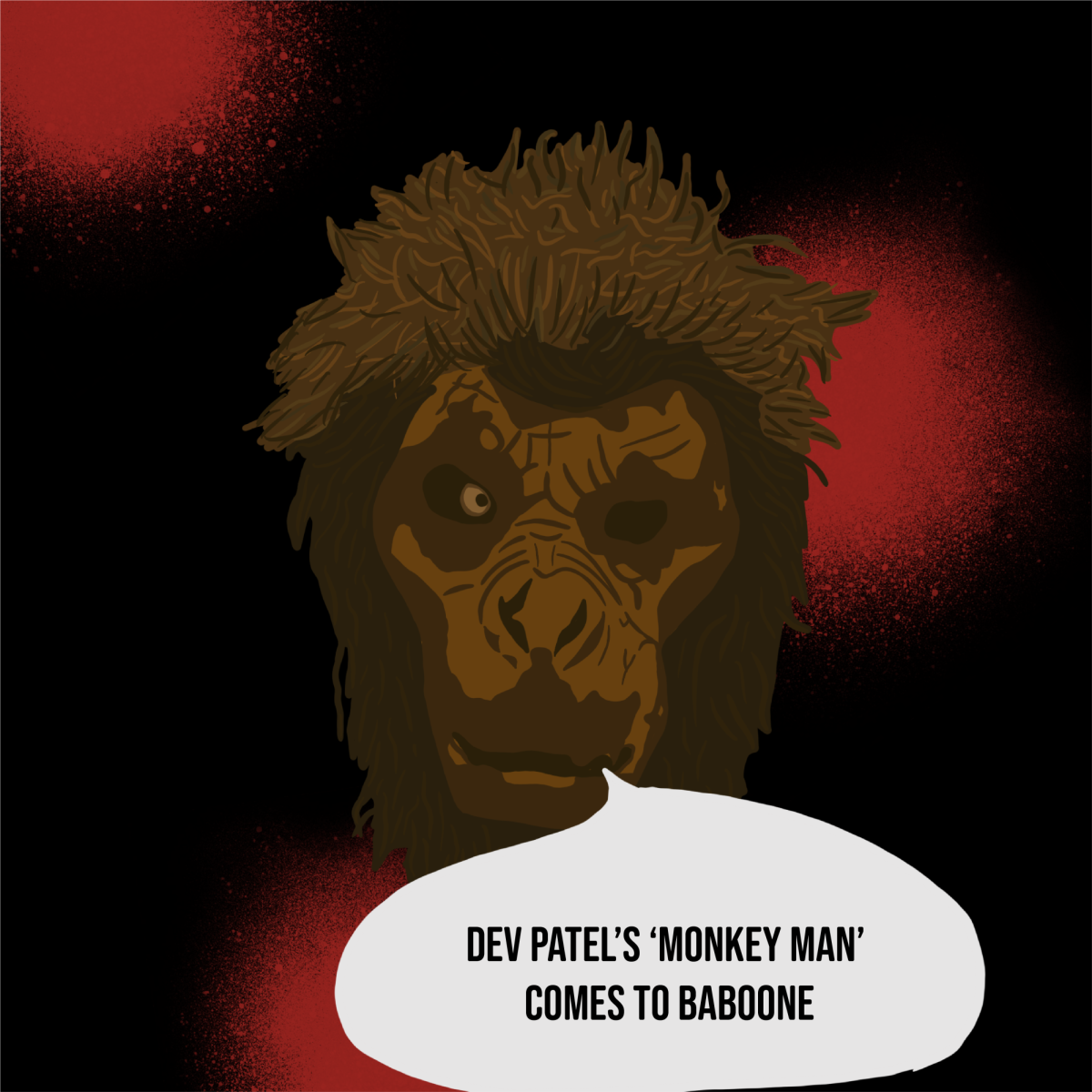Dev Patel, star of movies like “Slumdog Millionaire,” “The Green Knight” and “Lion” has leaped into the director’s chair for his latest film. “Monkey Man” is a grimy revenge thriller and bold debut for a new directorial talent.
Patel, a wiry 6 feet 2 inches, is an unusual pick for an action hero. He’s far from the muscular bulk of ‘80s icons like Arnold Schwarzenegger and Sly Stallone, but also doesn’t resemble the rugged everyman character made iconic by actors like Bruce Willis. Patel is handsome, soulful and lanky. He brings an unpredictable and driven intelligence to his entrée into action, and as a result the film feels intentional and purposeful in a way many action flicks don’t. Yet despite his height, smarts and good looks, “Monkey Man” falls short, convoluted and occasionally messy. It’s a shame because it starts out so strong.
The set-up for “Monkey Man” is thus: Kid, played by Patel, is a traumatized man who frequents an underground fight club called the Tiger’s Temple. He wears a monkey mask in homage to the Hindu deity Hanuman, hence the Monkey Man name, and appears to lose virtually every fight he participates in. Early flashback sequences in the film reveal Kid has lost his mother during the destruction of his village early in his life, and he’s routinely reminded of those events as they echo into his present.
The destruction of Kid’s village was ordered by a corrupt spiritual guru named Baba Shakti, played with villainous flair by Makarand Deshpande, and executed by brutal police chief Rana Singh, played by a mustache-twirling Sikandar Kher. Singh frequents a high-end brothel called King’s, which Kid plots to infiltrate by getting a job as a waiter and kitchen janitor.
This sets up the electric first act of the movie. Patel uses his intelligent and empathetic persona to great effect with Kid, who is immensely charming on the surface while cold and calculating as he works his way up the ranks at King’s. Queenie Kapoor, the brothel owner played by the wonderful Ashwini Kalsekar, is an early target of his. In an elaborately-shot heist sequence involving over 20 actors, Kid orchestrates the theft of Queenie’s wallet. What follows is the best directed sequence in the movie as the wallet changes hands from extra to extra as it navigates the streets of the film’s anonymous Indian city. Kid “finds” the wallet and returns it to Queenie, which is the skeleton key to acquiring his new job.

It’s frustrating recounting the beginning of “Monkey Man” because there’s such great stuff there. One montage involving a dog feels like a rebuke of the infamous opening of “John Wick,” a franchise which has perhaps the biggest imprint on the style and feel of “Monkey Man.” Patel is at least aware of his influences, giving “Wick” a shout-out later in the movie. Another subplot centers around Kid’s connection with the prostitute Sita, played by Sobhita Dhulipala. Her cynicism about their ability to change the world they’ve found themselves in is in direct opposition to Kid’s unchecked anger, and Dhulipala’s chemistry with Patel is one of the most successful things in the film.
The beginning of “Monkey Man” is fast-paced, intelligent and exciting. The fights are great. The plotting is sharp. The performances are wonderful. The second act goes off the rails.
Towards the end of the first act of “Monkey Man,” Kid is knocked unconscious. An unsuspecting audience might be too, considering how dull the next hour of the two-hour film is.
There are things to like in the remainder of “Monkey Man,” but between a protracted psychedelic sequence, implausible training montage and excessive use of the same flashbacks Kid has already been prone to, the movie grinds to a halt before picking up its pace for a mostly-satisfying finale. The first 45 minutes of the movie are incredible and an instantaneous recommendation for action fans. It’s unfortunate that the rest of the movie has to come with it.
However, in rejection of “Monkey Man” ending on a sour note, this review can end with the two best parts of the rest of the movie. The first is the complete and total embrace of Indian culture in the film. There is tons of Hindi language, complex politics and cultural heritage that Patel honors with his film. Audiences unfamiliar with, say, Hanuman, are doubtless leaving the theater with a few curious Wikipedia searches lined up. Patel, an Indian man who grew up in England, uses his unique voice to reckon with some of the historical weight of his heritage in his film. It’s admirable for an action movie to attempt.
The second is the film’s inclusion of a transgender community. The community is a wonderful admission of a woefully underseen part of Indian culture, and are given a pivotal role in Kid’s spiritual and physical transformation for the final act of the film.
“Monkey Man” is worth checking out. It’s a transportation to another place and a celebration of another culture. It’s also a delight to consider what Patel might do next. Even if it doesn’t entirely work, the film still has layers to unpeel.
Rating: 3/5 Yosefs




